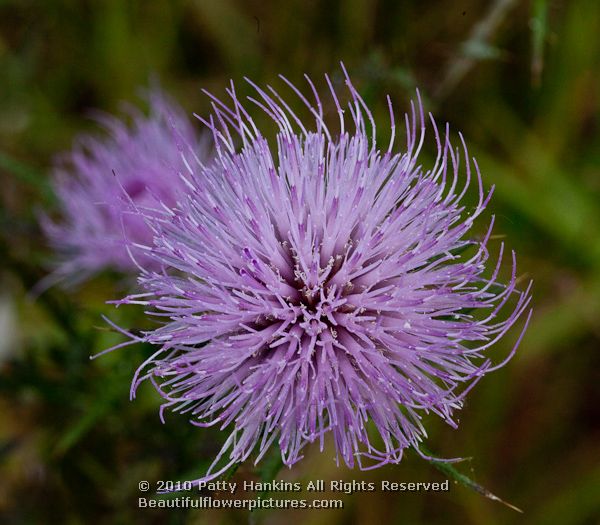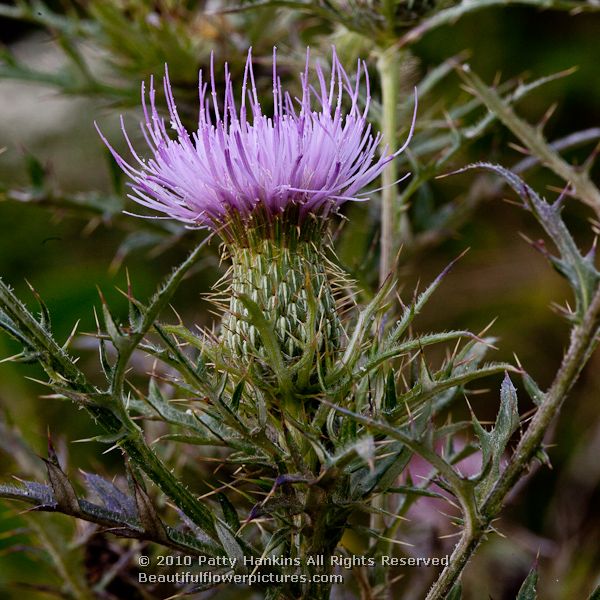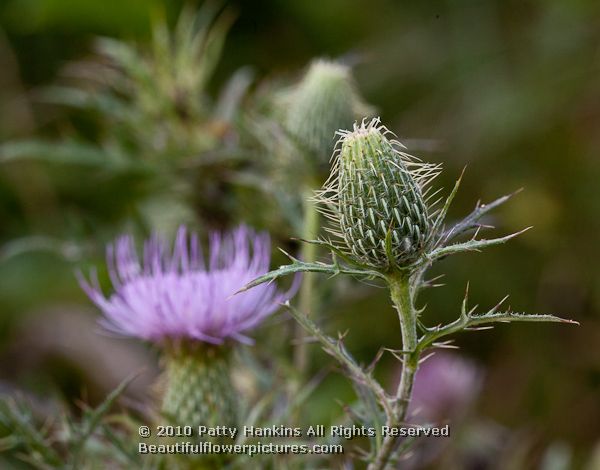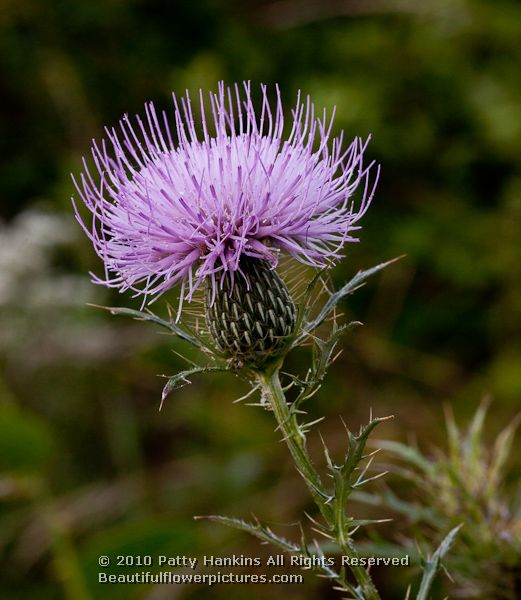One day late last summer I was photographing wildflowers along the side of the road near where I live. I noticed there were several thistle plants – which are pretty common site here in Montgomery County. Instead of ignoring them like I usually would do – I decided to stop, take a closer look at them, and take some time to photograph them. I was really happy that I did. For a plant that many people consider to be a weed – I was surprised at just how beautiful they can be.
(c) 2010 Patty Hankins
Field Thistle (cirsium discolor) is a member of the aster family native to the eastern half of the U.S. Also known as pink thistle, purple thistle and pasture thistle, cirsium discolor is considered a noxious weed in Iowa and Arkansas. It prefers to grow in full sun with good soil, but can grow in soil filled with clay and/or gravel. It’s preferred habitats include open prairies, woodland areas, pastures and along the roadsides.
Field Thistle is a perennial that grows between two and eight feet tall. The leaves are very distinctive – spiny, green on the top and white with fine hairs on the underside. The flowers are pink/purple and up to two inches across. At the base of the flowers are a series of overlapping green bracets that resemble fish scales.
Thistle’s of all sorts have had a poor reputation over the years. In the Bible, God told Adam “Cursed is the ground because of you. Thorns and thistles it shall bring forth to you.” Shakespeare referred to them as “rough thistles.” In the early twentieth century, Australia fined people who didnot destroy thistle plants in their fields.
They have also been appreciated by humans and wildlife. Goldfinches love eating thistle seeds. It is the larval host for the Painted Lady butterfly. In Scotland, the leaves were used as a food source for livestock. The leaves can be used in salads or roasted. The flowers of the Golden Thistle are used to make golden thistle wine. Thistles have long been used for medicinal purposes. A poultice made from the roots was used to heal wounds and treat boils. An infusion of the roots was traditionally used to treat stomachaches. As always, information about traditional uses is providing for informational purposes only – and is not a recommendation of medicinal use.
If you’d like more information about Field Thistle (cirsium discolor), some online sites with additional information include
Lady Bird Johnson Wildflower Center




